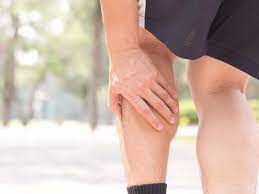Leg Calf Pain

Leg calf pain can be very uncomfortable. It is often caused by a disorder of the calf muscles, known as chronic posterior compartment syndrome (CPCS). The calf muscles are covered by a tough fibrous covering called fascia, and blood flows in and out of these muscles during exercise. Symptoms of this disorder include pain, tightness, and discomfort during activity, although the pain usually disappears once you stop the activity. However, the discomfort may come back if you do not get the proper treatment.
Symptoms
There are several possible causes of leg calf pain, including chronic health conditions and muscle injuries. This pain often occurs in the back of the leg below the knee, affecting the gastrocnemius, soleus, and plantaris muscles. It is often accompanied by swelling and redness and may be accompanied by a "pop." Calf pain is also a warning sign of a serious medical problem such as pulmonary embolism.
The first step in addressing calf pain is to identify the exact cause. If the pain is due to a muscle strain or cramp, you can try rest and massage to relieve it. Sometimes, you may need to take a prescription medication to help reduce swelling and inflammation. If you think a slipped disc may cause it, you can seek medical attention for a diagnosis and appropriate treatment.
Diagnostic tests for calf pain include blood tests and imaging tests. Blood tests can measure your erythrocyte sedimentation rate (ESR). If the ESR is higher than usual, your immune system has triggered inflammation. A liver enzyme test, called C-reactive protein (CRP), can also determine your type of inflammation.
Treatments
Treating leg calf pain begins with identifying the source of pain and reducing any swelling. Depending on the cause, you may be able to treat mild injuries at home with heat packs or ice. If the pain is severe, you should consult a doctor. In addition, consider taking magnesium supplements. These supplements prevent cramps in some people, including pregnant women.
The most common cause of leg calf pain is muscle strain or tear. However, it can also stem from the nerve, knee joint, or foot and ankle conditions. Calf pain is commonly associated with the Achilles tendon, the largest tendon in the body that connects the calf muscle to the heel bone. When the tendon is strained, it can lead to pain in the back of the leg and a burning sensation. This condition is called Achilles tendinitis.
Other causes of leg calf pain include underlying diseases and medications. People who sit for long periods may experience pain in the calf area. People with PAD and diabetes are at risk of developing this condition. Smokers may also develop this condition. You should consult a physician immediately if you suffer from leg calf pain.
Prevention
If you experience leg calf pain, you should seek medical attention. Treatment options include medication, rest, and physical therapy. You can also try lifestyle changes to prevent calf pain. For instance, it's good to warm up and cool down properly before exercise. Drink plenty of water and make healthy choices. You can also perform stretching exercises to relieve sore muscles.
Regular exercise can help prevent leg calf pain. You should also avoid sitting for long periods. Excessive sitting can cause DVT. The symptoms of DVT include pain, redness, and swelling. Treatment will depend on the cause of calf pain, but you should avoid putting yourself at risk of DVT by taking steps to prevent it. You should seek medical attention immediately if a vascular problem causes the pain. Your doctor can perform a musculoskeletal ultrasound to diagnose the exact cause. The doctor can then decide on the appropriate treatment options for you.
Another critical step in preventing calf pain is to ensure adequate hydration. Make sure you drink plenty of water before and after physical exercise. Drinking electrolytes can also help prevent muscle cramps.



